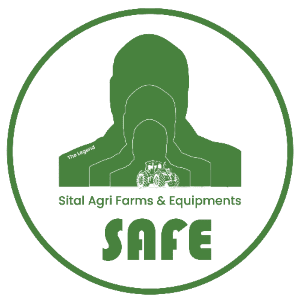Sourcing spare parts in remote areas presents a significant challenge for businesses, contractors, and industries relying on heavy machinery and specialized equipment. The limited availability of parts, logistical constraints, and high costs make it imperative to develop efficient procurement strategies. This guide explores the key challenges and provides actionable solutions to help businesses overcome obstacles in sourcing hard-to-find spare parts in remote locations.
The Key Challenges in Sourcing Spare Parts Remotely
1. Limited Availability of Spare Parts: Remote locations often lack access to reliable spare parts suppliers, making it challenging to source critical components. Unlike urban centres with multiple suppliers, remote areas may have limited or no local dealerships, forcing businesses to look for alternative options.
Solution: Establish relationships with trusted online suppliers and distributors that deliver parts to remote locations. Companies like Safe Spares and OEM suppliers can provide genuine replacement parts with reliable shipping options.
2. High Costs of Logistics and Transportation: Shipping heavy machinery spare parts to remote locations is expensive due to high transportation costs, fuel prices, and inefficient delivery networks.
Solution: Optimize procurement by bulk ordering essential spare parts in advance. Partnering with third-party logistics providers (3PLs) specializing in remote area deliveries can help reduce costs.
3. Longer Lead Times and Delays: Unpredictable weather conditions, border regulations, and limited transport infrastructure can cause delays in spare parts delivery.
Solution: Maintain a well-structured inventory management system and identify critical spare parts that need to be stocked in advance to minimize downtime.
4. Quality Assurance and Counterfeit Risks: Remote businesses may be forced to rely on unverified suppliers, increasing the risk of receiving counterfeit or low-quality parts that could damage equipment and lead to operational failures.
Solution: Work with certified distributors and insist on OEM-certified spare parts to ensure quality and compatibility with machinery.
Best Practices for Sourcing Spare Parts in Remote Areas
1. Partnering with Reliable Online Suppliers: The rise of e-commerce for industrial parts has made it easier to source spare parts from trusted suppliers. Platforms like Safe Spares and authorized dealers provide a wide range of genuine spare parts with nationwide shipping.
2. Implementing Predictive Maintenance Strategies: Businesses in remote areas can benefit from predictive maintenance, which helps anticipate spare parts needs before breakdowns occur.
- Use IoT-enabled sensors to monitor machine performance.
- Schedule proactive maintenance to reduce emergency repairs.
- Keep a stock of critical spare parts for emergencies.
3. Exploring Alternative Sourcing Methods: When traditional suppliers are not an option, businesses can explore alternative methods:
- Local Fabrication: Some parts can be custom-made by local workshops.
- 3D Printing Technology: A growing trend in remote locations, allowing businesses to print spare parts on demand.
- Second-Hand Parts Markets: Reputable resellers and auctions offer quality used spare parts at a lower cost.
4. Leveraging International Suppliers for Bulk Purchases: Global suppliers often provide better pricing and broader availability of spare parts. However, when sourcing parts internationally, businesses must factor in shipping times, customs duties, and compliance regulations.
Tip: Work with logistics providers specializing in cross-border trade to streamline the procurement process and avoid delays.
5. Building a Spare Parts Inventory System: Maintaining an efficient inventory system minimizes downtime and ensures critical components are readily available.
- Inventory management software is used to track spare parts usage.
- Categorize high-priority spare parts and ensure stock levels are maintained.
- Set up automated reordering systems for commonly used components.
Conclusion
Sourcing spare parts in remote areas requires a strategic approach, leveraging reliable suppliers, advanced logistics, and innovative sourcing methods. By implementing predictive maintenance, working with certified distributors, and maintaining an optimized inventory, businesses can overcome the challenges of spare parts procurement in remote locations.


